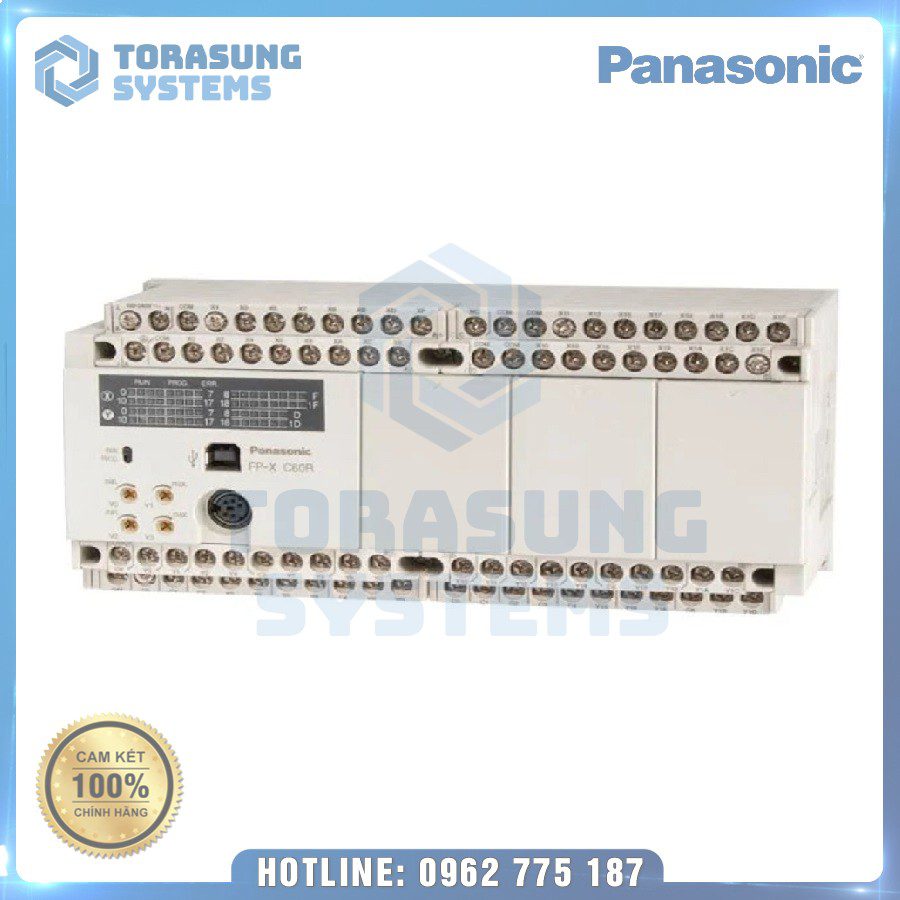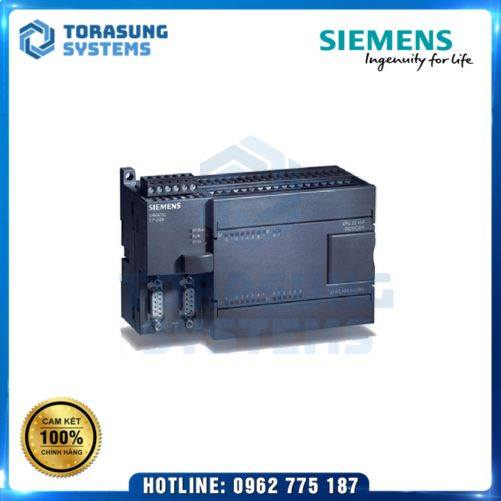Bộ điều khiển lập trình (PLC) đóng vai trò quan trọng trong tự động hóa công nghiệp hiện đại. Khả năng xử lý các phép toán logic phức tạp, độ tin cậy và tính thích ứng của chúng khiến PLC trở thành công cụ không thể thiếu trong nhiều ngành. Từ dây chuyền sản xuất đến sản xuất năng lượng, PLC đảm bảo hiệu quả vận hành, an toàn và độ chính xác. Hiểu được cách PLC được ứng dụng trong các ngành giúp doanh nghiệp lựa chọn chiến lược tự động hóa phù hợp nhất.
Đọc bài viết này để biết thêm về PLC: PLC – Định nghĩa, Nguyên lý hoạt động & Ứng dụng
Tại sao ứng dụng theo ngành lại quan trọng
Mỗi ngành công nghiệp có những yêu cầu riêng về tự động hóa. Dù là tiêu chuẩn an toàn thực phẩm, sản xuất liên tục trong các nhà máy năng lượng, hay nhu cầu linh hoạt trong lắp ráp ô tô, PLC đều được điều chỉnh cho phù hợp. Bài viết này khám phá các ứng dụng của PLC trong các ngành khác nhau nhằm cung cấp cái nhìn về cách công cụ linh hoạt này tối ưu hóa vận hành.
Ứng dụng PLC trong các ngành công nghiệp
1. Sản xuất và Tự động hóa công nghiệp
Ứng dụng: PLC là xương sống của các dây chuyền sản xuất tự động, từ điều khiển cánh tay robot đến quản lý băng tải.
Lợi ích:
- Đảm bảo chất lượng sản phẩm đồng đều bằng cách tự động hóa các tác vụ lặp đi lặp lại và phức tạp với độ chính xác cao.
- Giảm thiểu lỗi con người thông qua kiểm tra logic theo thời gian thực và tích hợp phản hồi từ cảm biến.
- Hỗ trợ giám sát và điều khiển quá trình theo thời gian thực, giúp ra quyết định nhanh chóng và thích ứng với môi trường sản xuất thay đổi.

2. Ngành đóng gói và chiết rót
Ứng dụng: PLC quản lý các máy tốc độ cao để dán nhãn, chiết rót, đóng nắp và đóng gói.
Lợi ích:
- Tăng năng suất và độ chính xác đóng gói ngay cả ở tốc độ vận hành cao.
- Dễ dàng thay đổi giữa các định dạng đóng gói khác nhau thông qua lập trình logic.
- Giảm thời gian ngưng máy nhờ khả năng bảo trì dự đoán và giám sát tình trạng máy móc.
- Hỗ trợ tuân thủ quy định đóng gói thông qua hệ thống truy xuất và xác minh mã vạch.
3. Ngành thực phẩm và đồ uống
Ứng dụng: PLC điều khiển nhiệt độ, thời gian trộn, định lượng nguyên liệu và chu trình vệ sinh.
Lợi ích:
- Đảm bảo tuân thủ các quy định về vệ sinh và an toàn bằng cách quản lý các điểm kiểm soát quan trọng.
- Cải thiện sự đồng nhất về hương vị, kết cấu và hình thức sản phẩm giữa các mẻ sản xuất.
- Cho phép truy xuất nguồn gốc để đảm bảo chất lượng và kiểm tra an toàn thực phẩm.
- Dễ dàng tích hợp với hệ thống SCADA để giám sát và điều khiển toàn bộ quá trình.
4. Ngành công nghiệp ô tô
Ứng dụng: PLC được sử dụng trong dây chuyền lắp ráp để điều phối hàn, sơn, lắp đặt linh kiện và kiểm tra chất lượng.
Lợi ích:
- Tăng hiệu quả sản xuất nhờ phối hợp chính xác giữa các tác vụ robot và thủ công.
- Giảm tỷ lệ lỗi trong lắp ráp nhờ kiểm tra từng bước với phản hồi cảm biến và logic tuần tự.
- Hỗ trợ hệ thống sản xuất linh hoạt cho các mẫu xe hoặc biến thể linh kiện khác nhau mà không cần lập trình lại lớn.
- Cung cấp báo cáo sản xuất chi tiết và chỉ số chất lượng để cải thiện quy trình.
5. Ngành dệt may
Ứng dụng: PLC tự động hóa quy trình nhuộm, sấy, cắt và xử lý vải.
Lợi ích:
- Nâng cao độ chính xác về vải và màu sắc bằng cách điều chỉnh liều lượng hóa chất và thời gian quy trình.
- Giảm lãng phí và tái làm lại nhờ phát hiện lỗi theo thời gian thực và điều chỉnh quy trình ngay lập tức.
- Cho phép tích hợp với hệ thống in kỹ thuật số, cải thiện hiệu quả và khả năng tùy chỉnh.
- Hỗ trợ theo dõi lô và quản lý công thức để tái tạo nhanh các thiết kế.
6. Nhà máy xử lý nước và nước thải
Ứng dụng: PLC điều khiển bơm, định lượng hóa chất, lọc và hệ thống xả thải.
Lợi ích:
- Duy trì chất lượng nước ổn định thông qua điều khiển quá trình chính xác và thích ứng.
- Hỗ trợ giám sát từ xa và quản lý cảnh báo, phản ứng nhanh với các vấn đề quan trọng.
- Hỗ trợ mục tiêu bền vững bằng cách giảm hóa chất thải và tối ưu hóa năng lượng.
- Cải thiện tuân thủ quy định môi trường bằng cách cung cấp dữ liệu vận hành chi tiết.
7. Sản xuất điện và ngành năng lượng

Ứng dụng: PLC điều khiển tua-bin, máy phát và thiết bị đóng cắt trong các nhà máy năng lượng truyền thống và tái tạo.
Lợi ích:
- Đảm bảo an toàn vận hành bằng cách giám sát các thông số quan trọng và ngăn ngừa quá tải hoặc sự cố.
- Hỗ trợ cân bằng tải và tối ưu hóa năng lượng thông qua tích hợp với hệ thống lưới điện thông minh.
- Dễ dàng tích hợp nguồn năng lượng tái tạo như năng lượng mặt trời hoặc gió.
- Giảm thời gian ngừng hoạt động không kế hoạch nhờ giám sát tình trạng và chẩn đoán lỗi.
Kết luận
Như bài viết đã minh họa, ứng dụng của PLC trong các ngành khác nhau là rộng rãi và có ảnh hưởng lớn. Mỗi ngành hưởng lợi từ tính linh hoạt, độ tin cậy và khả năng mở rộng mà PLC mang lại. Bằng cách lựa chọn và cấu hình PLC phù hợp với nhu cầu công nghiệp cụ thể, doanh nghiệp có thể tối ưu hiệu suất, giảm chi phí vận hành và nâng cao hiệu quả tự động hóa.
Hiểu rõ vai trò của PLC trong các ngành không chỉ nhấn mạnh tính đa dụng của chúng mà còn giúp tổ chức lập kế hoạch chiến lược tự động hóa dài hạn một cách tự tin. Dù bạn đang hiện đại hóa dây chuyền sản xuất thực phẩm hay quản lý một cơ sở năng lượng tái tạo, PLC là chìa khóa để xây dựng hệ thống thông minh, hiệu quả và sẵn sàng cho tương lai.






